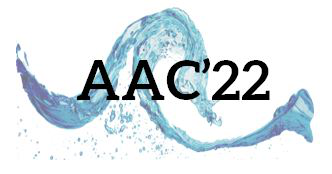Speaker
Description
Few-cycle laser pulse generation [1] is an enabling technology for making the most compact laser-plasma accelerators. Few-cycle pulses are usually generated by spectral broadening and subsequent compression of originally 30-40 fs long laser pulses. One common spectral broadening approach is via self-phase modulation in a noble gas-filled hollow-core fiber. Using this technique, we have demonstrated compression of ~40 fs pulses down to <4 fs. Resonantly driving plasma waves with few-cycle laser pulses, a few mJ of energy is sufficient to generate MeV-level electron beams in a sub-millimeter plasma [2,3]. An alternative pulse compression approach using solid plates at near field is currently being explored. By carefully matching the solid plate thickness with the near-field intensity profile of the laser beam, a spatially homogeneous broadened spectrum can be obtained. This new technique paves the way towards driving laser-plasma accelerators with high average power and high wall plug efficiency fiber laser systems.
[1] Ouillé, M., et al. Relativistic-intensity near-single-cycle light waveforms at kHz repetition rate. Light Sci. Appl. 9, 47 (2020).
[2] Faure, J., et al. A review of recent progress on laser-plasma acceleration at kHz repetition rate. Plasma Phys. Control. Fusion 61 014012 (2018).
[3] Salehi, F., et al. Laser-Accelerated, Low-Divergence 15-MeV Quasimonoenergetic Electron Bunches at 1 kHz. Phys. Rev. X 11, 021055 (2021).
Acknowledgments
This work was supported by the Director, Office of Science, Office of High Energy Physics, of the U.S. Department of Energy under Contract No. DE-AC02-05CH1123.

